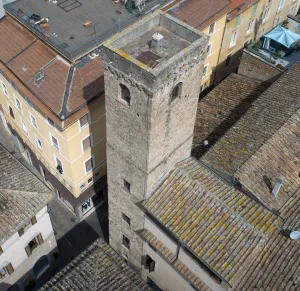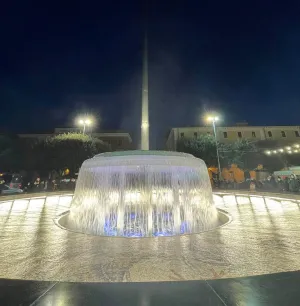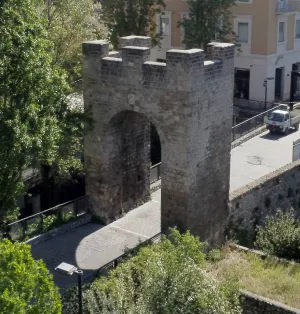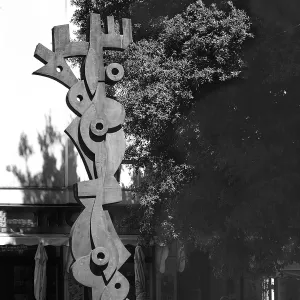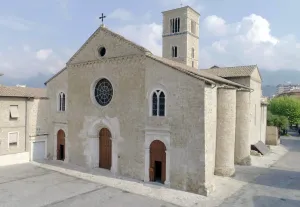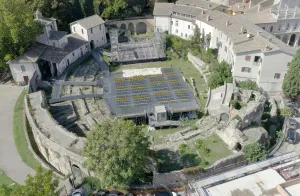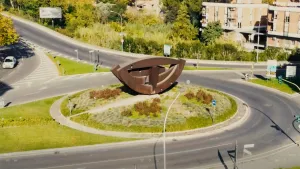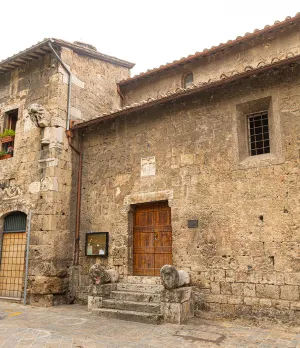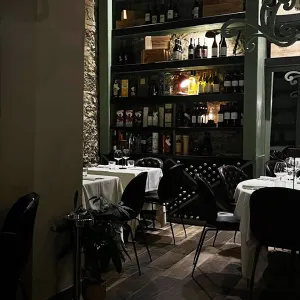Born in the city and related to the city
Defined by some as 'The Musical Notes' and by others as nothing more than the contemporary transposition of motifs inspired by Roman Baroque forms. They are, however, the fruit of the artistic mind of Eliseo Mattiacci.
The sculptures date back to 1986 and for a long time were used as urban decoration in via Petroni, a side- street leading off from Corso Tacito, right in the historic centre of Terni. All in all, these are typical statues by Eliseo Mattiacci, who has always tried to avoid giving his sculptures a strong monumental character. In order to do this, he has always avoided placing his sculptures on a plinth. In fact, his six "musical notes" lay horizontally on the ground. The peculiarity, if anything, can be found in the material used. Eliseo Mattiacci experimented with several types of materials, each time using either metal or glass. In the case of Terni however, concrete was used.
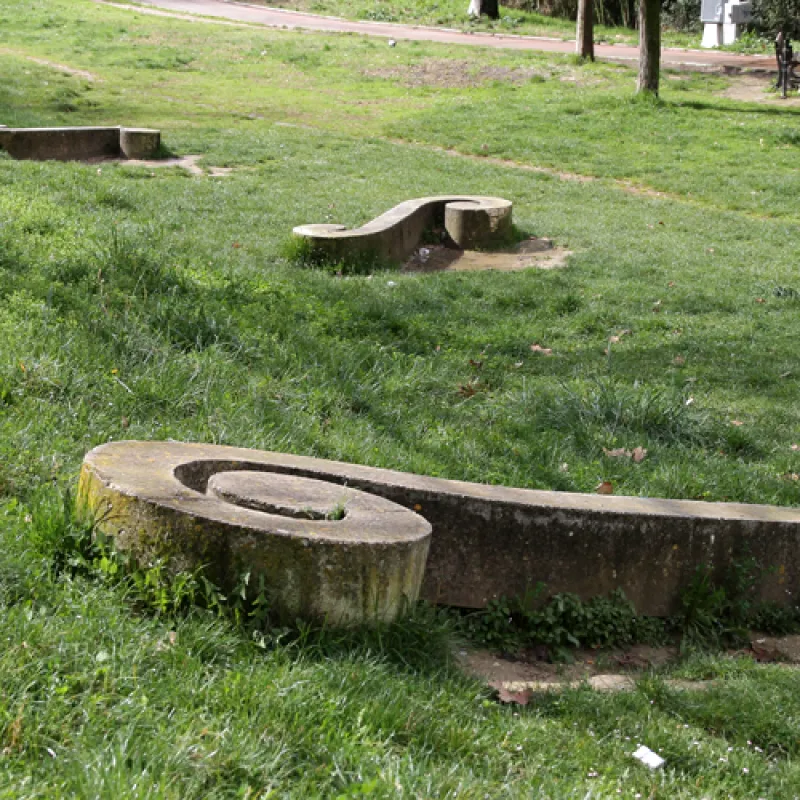
The current location in the public gardens seems more appropriate than the original one which was on a street in the town centre. Their placing in the public gardens appears to be a better choice. In a green area used for jogging or simply to relax for a while, those supple structures curled at the ends take on an intrinsic beauty, producing the effect of a mutual aesthetic enhancement between the green of the ample lawn and the typical colour of the concrete structure. Mattiacci's sculptures become part therefore of the daily life and habits of those who go to the gardens in via Giannelli, so much so that they are considered a natural component of the park itself, used spontaneously and without inhibition. Works of art that are used well and have been appropriated by the local population.
Not far from them, it is possible to see other concrete structures, that are not however works of art. They happen to be the entrance to an air-raid shelter that had been built in that part of the city, close to the medieval city walls. At the end of the Second World War, the deflection of the ground had been filled in with the rubble of the houses in the centre that had collapsed due to the explosions of bombs dropped by the 'flying fortresses'. It was only a few decades later that the embankment made from that rubble was removed and access to the air-raid shelter was restored. The town council of Terni then decided to proceed with its renovation in order to leave a sign in memory thereof and at the same time a reminder in support of peace.
